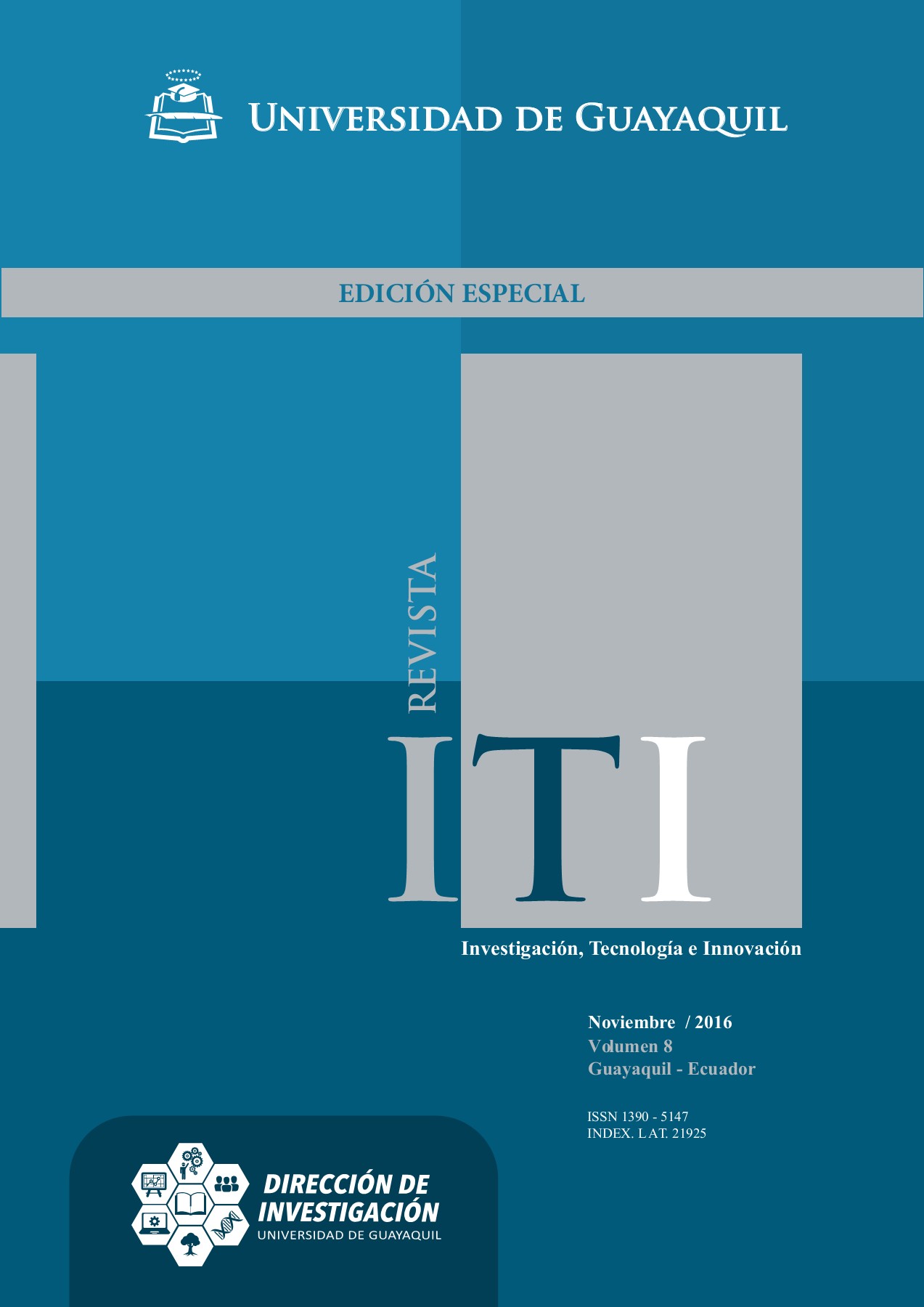Antimicrobial susceptibility of pathogenic bacteria isolated in urine cultures. General Hospital "Isidro Ayora", Loja
DOI:
https://doi.org/10.53591/iti.v8iEE.1351Keywords:
urinary tract infection, antimicrobial susceptibility, beta-lactamases extended spectrumAbstract
Urinary tract infections are one of the most common queries in primary care, the etiological agents often develop bacteria! resistance complicates treatment; in this context, this research was conducted in a 2º leve! hospital of Loja in south Ecuador; in samples from patients with medical order urine culture. Were a total of619 samples wich 237 (38.28%) positive. For bacteria identification techniques were used conventional bacteriology, such as culture, count and biochemical tests; for antibiogram was used disk diffusion technique by Kirby Bauer method; screening and confirmatory test for ESBL were use CLSI techniques. Were identified as main causal agents ofITU bacteria belonging to family Enterobacteriaceae, the most frecuent species E. coli, Gram negative bacteria presented percentage of sensitivity about 70% for cephalosporins third and cuart generation, ciprofloxacin, aztreonam, ampicilin sulbactam y nitrofurantoín and lower at 50% for nalidíxic acid. Also were isolated Gram positive bacteria Staphylococos with 60% sensitivity profile low for peniclin and 10% for Enterococcus sp. Was determined a percentage of 15,52% of BLEE in Enterobacteriaceae with the highest percentage on K. pneumonia, the distribution of BLEE was more common in women from outpatient with a 74% y 70,4% respectívely, with age 33,34% on major 46 years.
References
Ana María García Hernández, E. G. (2011). Bacteriemias por Escheríchia coli productora de betalactamasas de espectro extendido sognificación clínica y perspectivas actuales. 24(2).
Aura Lucía Leal, J. A. (2011). Emergencia de fenotipos resistentes a cefalosporinas de tercera generación en Enterobacteriaceae causantes de infecciones del tracto urinario de inicio comunitario en Hospitales de Colombia. 31(5).
Clinical and Laboratory Standards Institute. ( volumen 33 N° l. 2013). Performance Standards for Antimicrobial Susceptibility Testing, Twenty tlirird Informalional Supplement. Estados Unidos: CLSI.
Cornejo - Juárez P, V. A.F (2007). Patrones de resistencia bacteriana en urocultivos en un hospital oncológico. . 49(330).
Cortes M, S. A. (2007). Cliange in Escliericllia coli antibiotic therapy resistance in female urinary tract infections in the last 10 years. 72(3).
Echeverria Zárate Juan, S. A. (2006). Infeccion del tracto urinario y manejo antibiótico. 23(1).
Espinoza Juana, M. E. (2009). Frecuencia y susceptibilidad antibiótica de enterobacterias aisladas en urocultivos, en comunidades del estado Sucre durante el lapso 2005-2006. 13( 1).
Espinoza Rivera Fidel, H. C. (2012). Importancia epidemiológica, asistencial y económica del cultivo de orina, en pacientes hospitalizados y de la comunidad. 52(1).
Ferran Navarro, C. J. (2011). Derección fenotípica de mecanismos de resistencia en microorganismos gramnegativos. 29(7).
García José, R. E. (2009). Susceptibilidad Antimicrobiana in vi/ro de enterobacterias nosocomiales productoras de betalactamasas de espectro expandido. 37(1).
Gutiérrez catalina, L. J. (2013). Vigilancia de enterobacterias productoras de carbapenemasas en cultivos rectales en un hospital universitario de Santiago, Chile. 30(1).
JE Chumpitaz - Conde, J. M.S. (2001). Resistencia Bacteriana en Infecciones intrahospitalarias de vías urinarias. 1(4).
Koneman Elemr W, W. W. (2008). DiagnósticoMicrobiologico. Texto y Atlas en color Argentina: Médica Panamericana.
Leal Ana Lucía, C. J. (2012). Emergencia de fenotipos resistentes a cefalosporinas de tercea generación en Enterobacteriaceae causantes de infecciones de tracto urinario de inicio comuntario en Hospitales de Colombia. 31(5).
Manuel, R.M. (2005). Mecanismos de resistencia a quinolonas mediada por plásmidos. 23(1).
Medie, C. V. (2010). Prevalencia de infecciones de vías urinarias en embarazadas atendidas en el Hospital Universitario de Puebla. 30(4).
Navarro Navarro M, R. Z. (2011). Escherichia coli y Klebsiella pneumoniae comunitarias y hospitalarias productoras de B - lactamasas de espectro extendido. 53(1).
Perozo Mena Armindo, C. G. (2007). Caracterización Molecular y detección de betalactamasas de espectro extendido en cepas de E. coli y K. pneumoniae aisladas en Unidades de Cuidado Intensivo en Hospital Universitario. 35(2).
Puerta Henry, e. a. (2011). Capacidad de los laboratorios de microbiología clínica de Cartagena para detectar microorganismos productores de betalactamasas de espectro extendido. 9(3).
Quizhpe Arturo, M. M. (2011). Recuperar la salud integral y la armonía en los ecosistemas, para contener la resistencia bacteriana a los antibióticos.
Roca Daniel, l. A. (2008). Frecuencia y susceptibilidad antimicrobiana de patógenos aislados en infección del /meto urinario. 51(5).
Sánchez Merino J. M, G. M., C., F. F., & al, e. (2003). Sensibilidad antimicrobiana de Escherichia coli en infecciones urinarias de espectro extendido. 32(2).
Serralach, C. P. (2013). Infección del tracto urinario. Barcelona: Salvat.
Tedesco Maiullaire Rosa María, G. A. (2012). Epidemiología molecular de Klebsiella pneumoniae productoras de lactamasas de espectro extendido. 32(2).
Usiña Jhon, C. S. (2013). Anuario de Estadísticas vitales y Defunciones 2013. Quito: Instituto Nacional de Estadísticas y Censos.
Downloads
Published
Issue
Section
License
Copyright (c) 2016 Carmen Alejandra Ullauri González, Liena Shinkarenko

This work is licensed under a Creative Commons Attribution-NonCommercial-NoDerivatives 4.0 International License.






